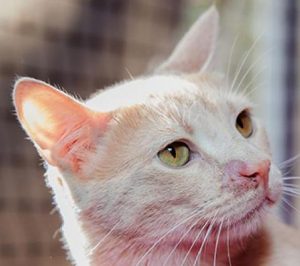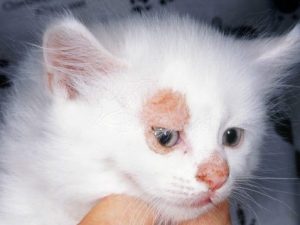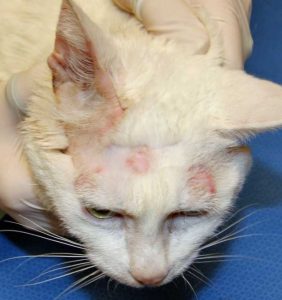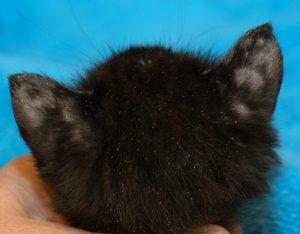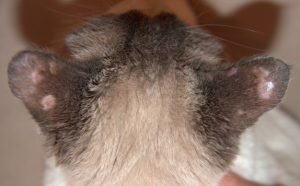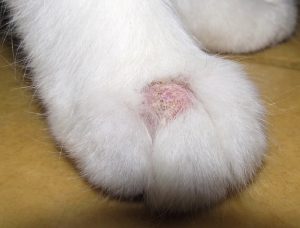Module 4: Healthcare practices for common contagious infectious diseases
Ringworm Clinical Features
M. canis is a zoophilic dermatophyte that requires keratin in hair shafts and follicles for survival and replication. The fungus grows along hair shafts and produces infectious spores that can be transmitted through direct contact to other cats and shed into the environment. Spores can remain viable in the environment for up to 18 months.
Incubation Period
Skin lesions typically appear within 7 to 14 days after infection. The fungus starts producing spores in the hair follicles within the first week of infection. Once spores are produced, the cat is infectious to other cats.
Shedding Period
Without treatment, M. canis will continue to produce spores in the hair follicles and shafts of infected cats. Eventually, the immune response will eliminate the infection, but this can take weeks to months.
Microsporum canis (feline ringworm)
- Pathogen type: dermatophyte fungus
- Transmission route: direct contact with infected cats
- Incubation period: 1-2 weeks
- Shedding period: weeks to months without treatment
- Persistence in environment: yes (spores)
Clinical Disease
The typical ringworm lesion in cats is a circular area of hair loss of varying size. Lesions may be single or multiple, and are mostly on the ears, head, face, legs, feet, and tail. Kittens typically start with lesions on the nose that spread around the eyes, sides of the face, and ears. The lesions can have crusty edges, red inflamed centers, and may or may not be pruritic. Here are photographs of typical ringworm lesions in kittens.
-
Kitten with a subtle early ringworm lesion near the nose
-
Kitten with a large ringworm lesion around the right eye and a smaller one on top of the nose
-
Kitten with multiple ringworm lesions on the head
-
Kitten with ringworm lesions on the pinnas
-
Another kitten with ringworm lesions on the pinnas
-
Kitten with a ringworm lesion on the right front foot
However, ringworm can present with a wide range of appearances, including large areas of hair loss with or without crusts anywhere on the body. Ringworm can mimic other common skin diseases, including flea allergy dermatitis, Otodectes ear mites, demodectic and sarcoptic mange, and bacterial pyoderma. Since ringworm can resemble many feline skin diseases, it should be considered in cats with any skin condition.

